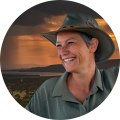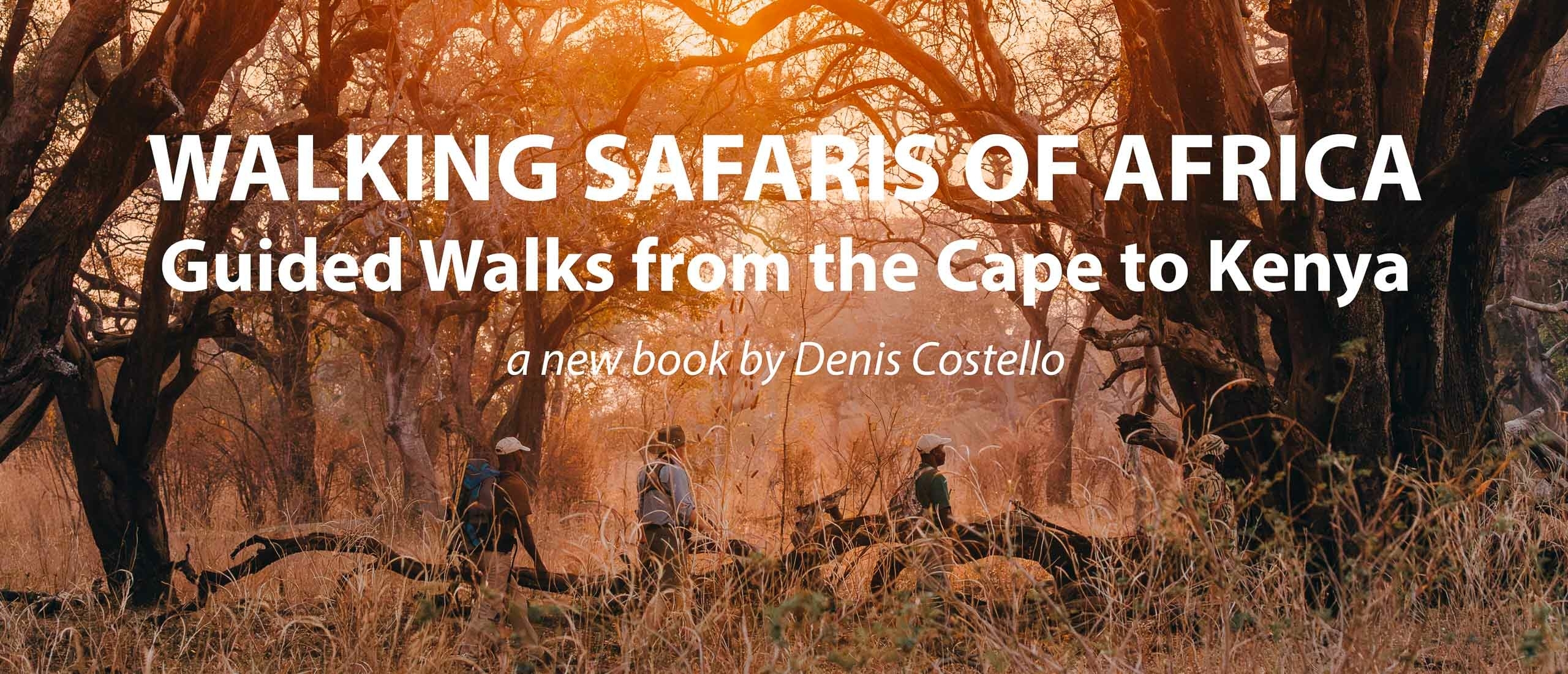
Walking Safaris of Africa Book by Denis Costello: Why You Should Explore Africa on Foot
Walking Safaris of Africa by Denis Costello is a new book about exploring Africa on foot, and I’m proud that it features more than 50 of my safari photographs, among them the opening and closing images, both captured in Zambia’s spectacular Luangwa Valley.
There’s something timeless about seeing your own photographs in print. Magazines come and go, but books have a way of lingering - waiting to be rediscovered years later. That’s why it was such a joy to return from the Kenya trip that I hosted and find a copy of Walking Safaris of Africa: Guided Walks from the Cape to Kenya on my desk.
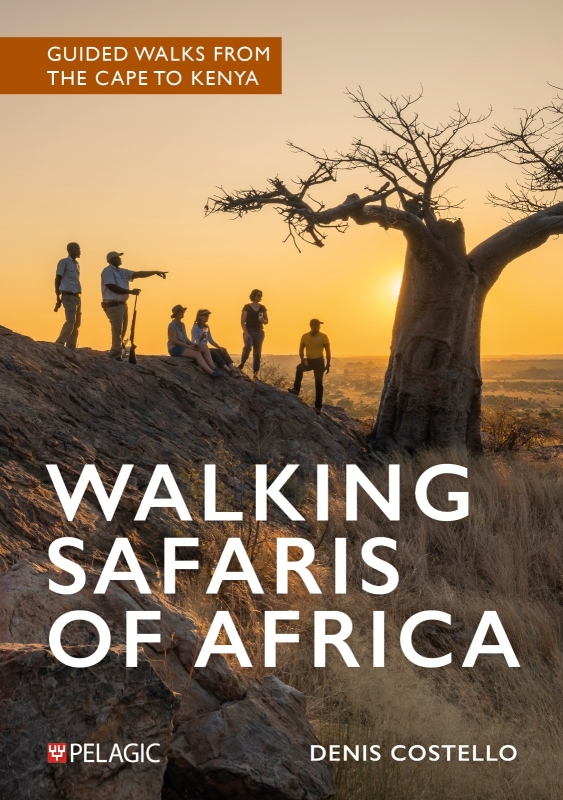
This new book by Denis Costello spans nine African countries over 350 pages, covering the very best places for walking safaris.
Why Walking Safaris Deserve the Spotlight
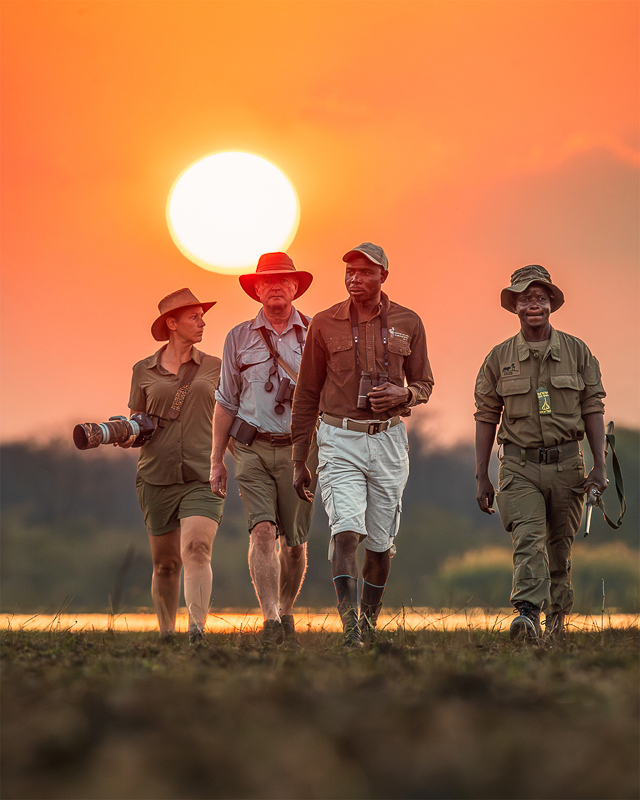
Image by Danny Badger (CAWS) pictures Kim Paffen (left) and author Denis Costello next to her.
If you’ve ever been on safari, you’ll know the thrill of a game drive. But sitting in a vehicle isn’t the only way to experience the wild. On foot, every sense sharpens: you notice the buzz of bees in a fever tree, the earthy scent of wild sage, the crackle of twigs under an elephant’s step. Walking safaris aren’t about chasing close encounters with the Big Five. Instead, they’re about slowing down, tuning in, and discovering Africa’s wilderness in its purest form.
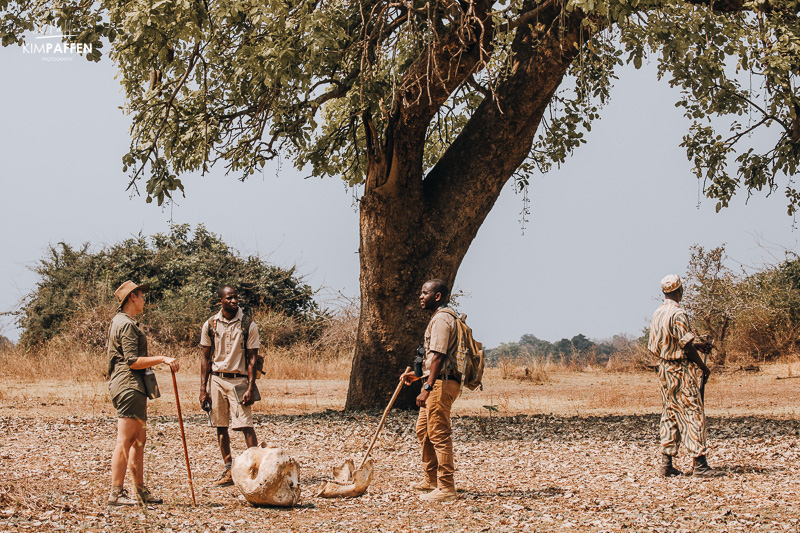
That’s exactly what the book Walking Safaris of Africa captures. It explains why more travelers are seeking this deeper, slower way of exploring. It's the sort of book that makes you wonder why it wasn’t done before. There are so many safari travelers who want to do more than sit in a vehicle, and I think most have no idea that it is possible to walk in the care of expert guides.
Some of my best African memories are from early mornings on foot, such as the time we tracked lions in Lower Zambezi National Park. We could hear a male roaring from camp, and walked towards the sound as it got increasingly loud. We used trees and termite hills for cover and got to about 100m, and he never detected us – he was busy with his mate!
![]()
But that was an unusual event, and most of the walks I’ve taken are less about approaching animals and more about the pleasure of simply being on foot in wilderness – hearing the sounds of bees in the trees, soaking up the scents of aromatic plants, getting to spend time with the most interesting and experienced guides. The book does a good job of explaining why walking safaris are addictive.
I have not done any backpacking safaris (and don’t plan to!), but all the other types of walking safaris covered in the book are very accessible – slow and gentle, with plenty of stops. As for most travelers, my first walk was from a lodge in place of a game drive one morning. Later, I did walks from lodges to comfortable fly-camps and also from dedicated trail camps in South Africa and Zambia.
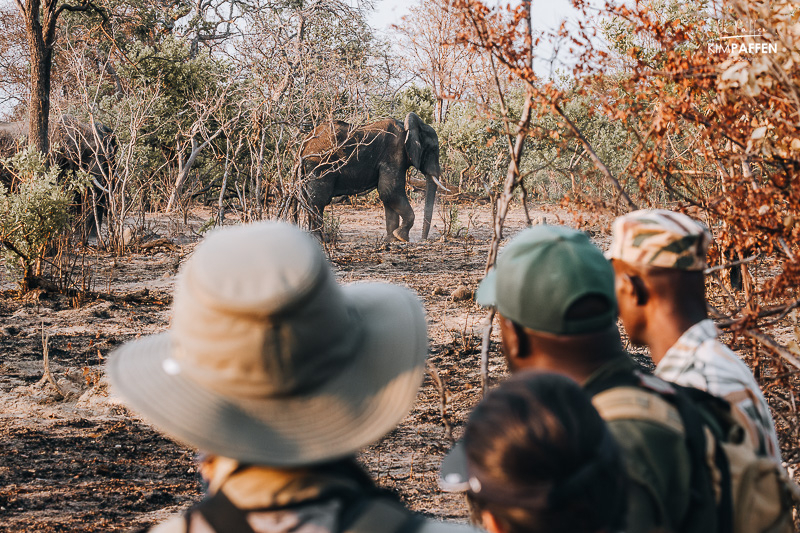
One of the side benefits of these camps is their intimate scale, as they generally have a maximum of eight beds to fit the maximum size of a walking group. There is usually a vehicle available, so in practice, there’s a combination of walking and driving, which gives me a good variation in photographic opportunities.
What Makes the Book Special
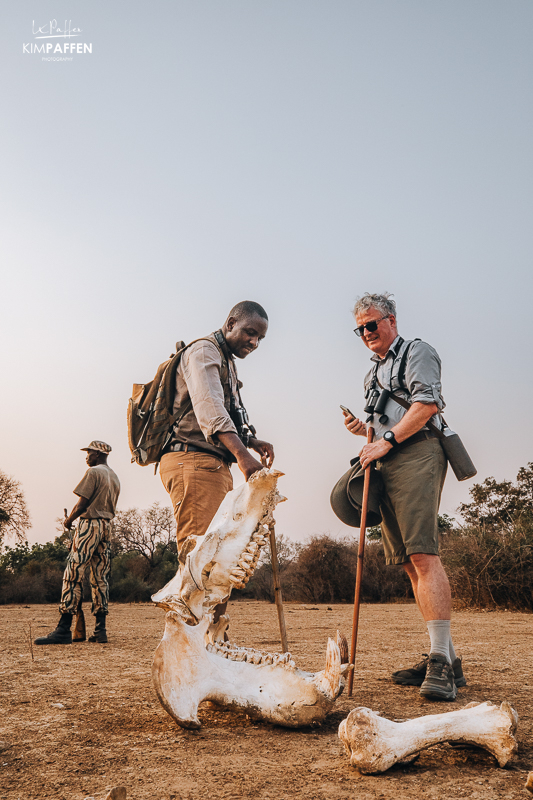
Walking Safaris of Africa isn’t just a book; it’s a practical guide. You’ll find insights on:
- Where and when to go for the best walking safari experiences
- What to pack and wear for safety and comfort
- The different styles of walking safaris, from half-day lodge walks to multi-day trails camps
- Inspiring photography (yes, mine too!) that brings the stories to life
It’s a book for both first-timers and seasoned safari-goers. Beginners will learn the ropes, while veterans will undoubtedly add new destinations to their bucket list.
My Top 5 Walking Safari Destinations in Africa
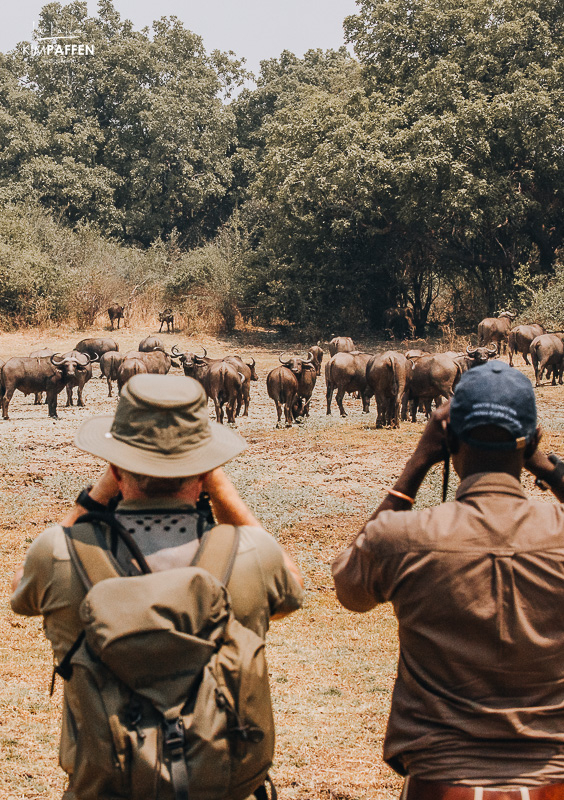
I hope there will be a new edition of the book that features Uganda, as I enjoyed my walking safaris in Uganda last year. Especially camping and walking in Murchison Falls. Meanwhile, here’s my Top 5 favorite walking safari destinations in Africa, all of which feature in Walking Safaris of Africa.
1. Kruger National Park, South Africa
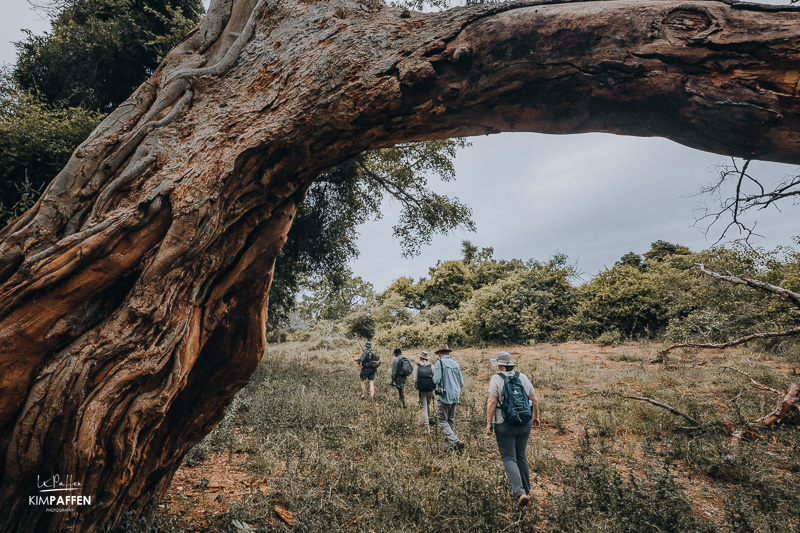
Kruger is a paradise for walking safaris. While SANParks has several rest camps and runs Wilderness Trails in Kruger National Park, private reserves offer specialized guided walks. There are dozens of private camps and lodges, both in the park and neighboring reserves, that have Trails Guides on staff.
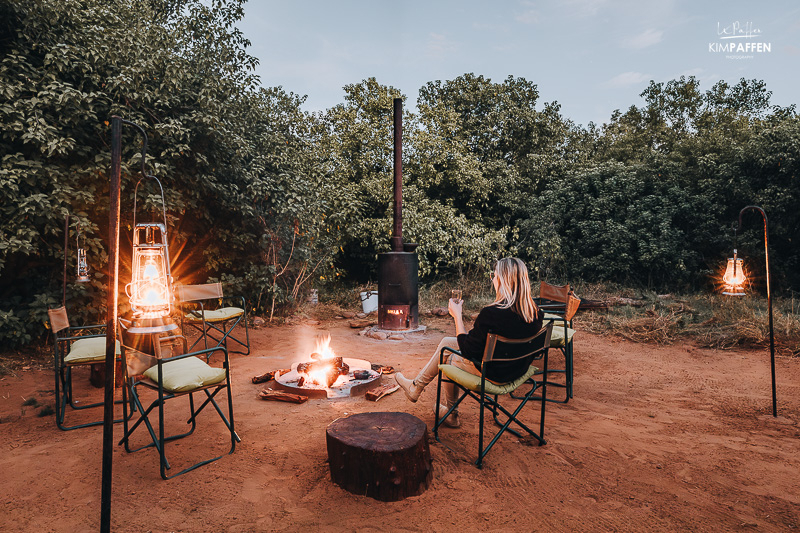
By far my favorite walking zone here is the Pafuri Triangle (also known as Makuleke Contractual Park), which is in the very north of Kruger between the Luvuvhu and Limpopo rivers. It’s those perennial rivers and the sheer variety of terrain that make walking here so good. We explored the floodplain with its pans and gorgeous fever tree forest, and then the contrasting sandstone gorges on the Luvuvhu.
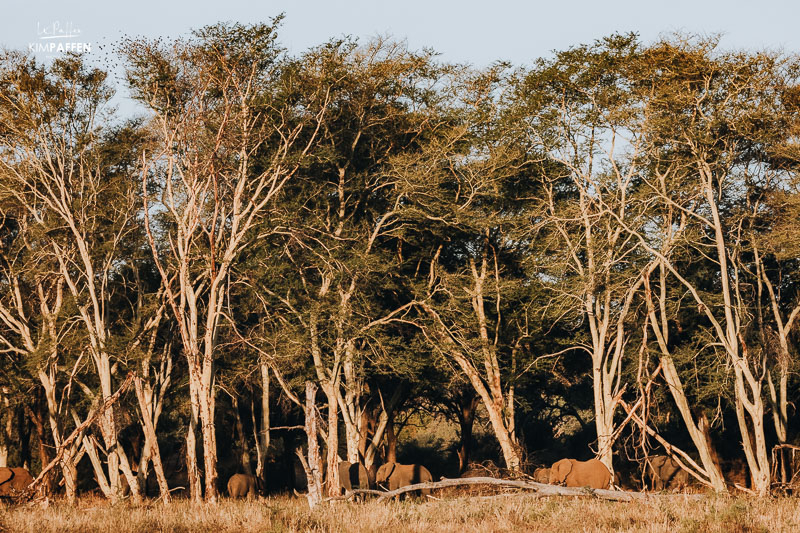
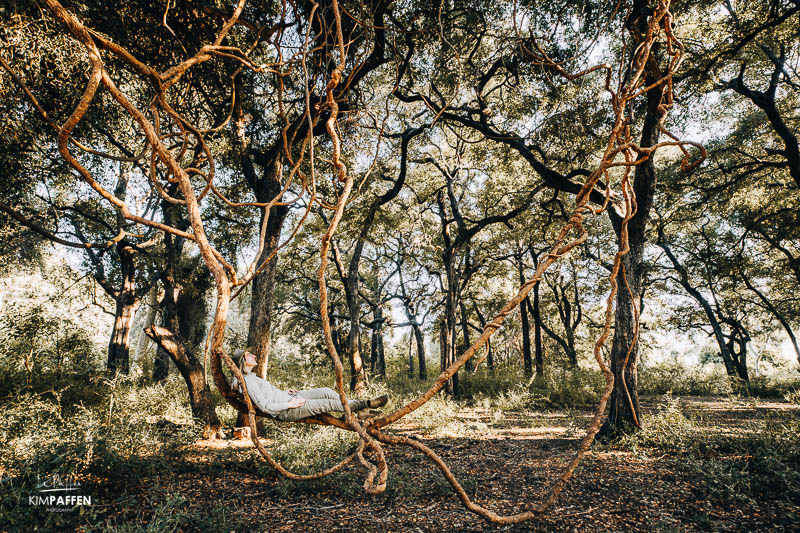
Pafuri has one of South Africa’s premier specialist walking safari operators, Pafuri Walking Safaris, who run walks (and game drives) from their fixed camp and two small seasonal trails camps. For a splurge, I recommend Rare Earth’s Outpost, which has a really spectacular location and also leads walks.
2. Lower Zambezi National Park, Zambia
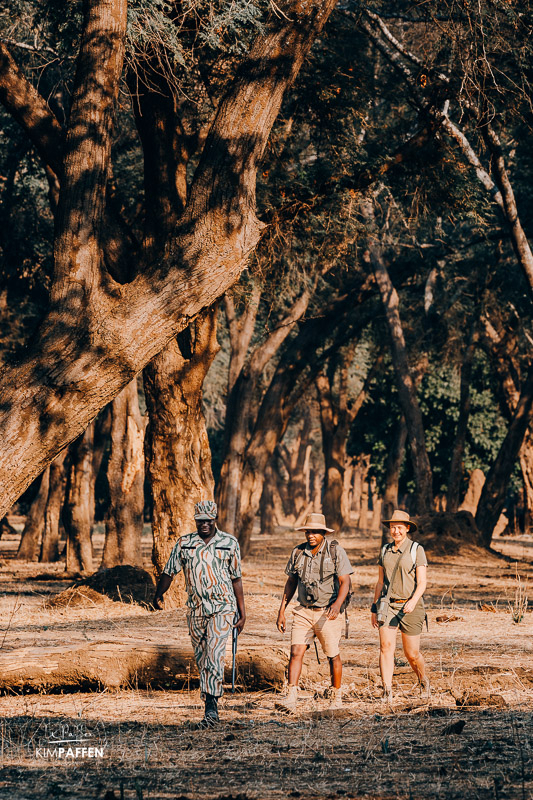
The Zambezi valley could be my favorite walking area in all of Africa. Where the Zambezi River flows east from Lake Kariba, there are superb parks on both banks – Mana Pools National Park on the Zimbabwe side, and Lower Zambezi National Park on the Zambia side to the north.
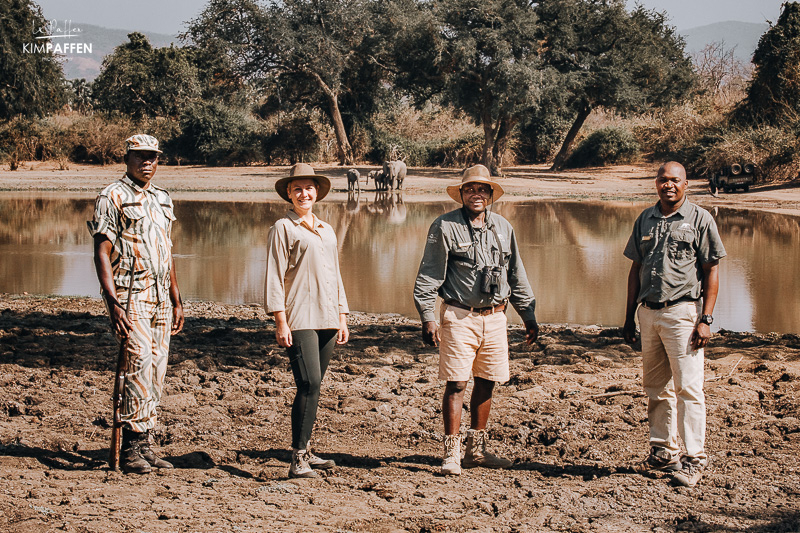
Both have similar wildlife and terrain, and the trees are a highlight – expanses of winter thorn, mahogany, and sausage trees, so the walking is shady, and it’s easy to spot the elephants and other animals ahead.
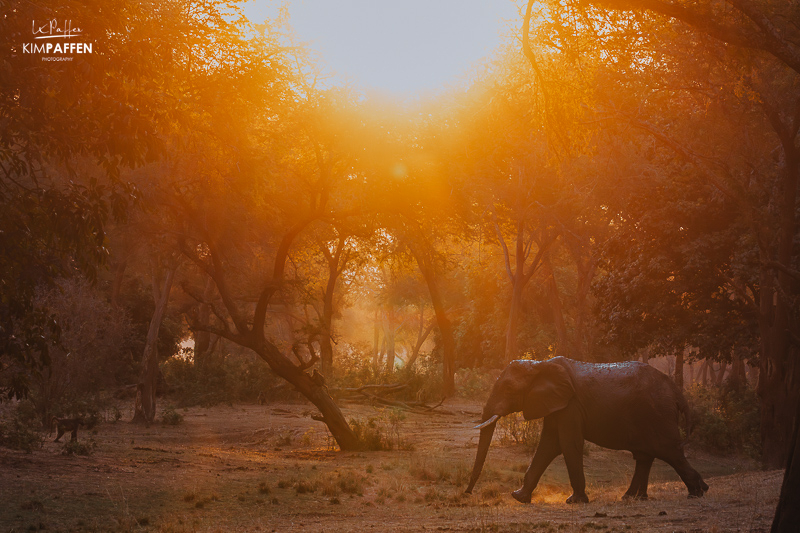
For my photography, the Zambezi Valley woodlands are perfect at dawn and late afternoon, with the rich light filtered through the suspended dust and the blue effusions of the winter thorn. If I had to pick, I would prefer the Zambia side, as there are fewer lodges and therefore fewer vehicles around.
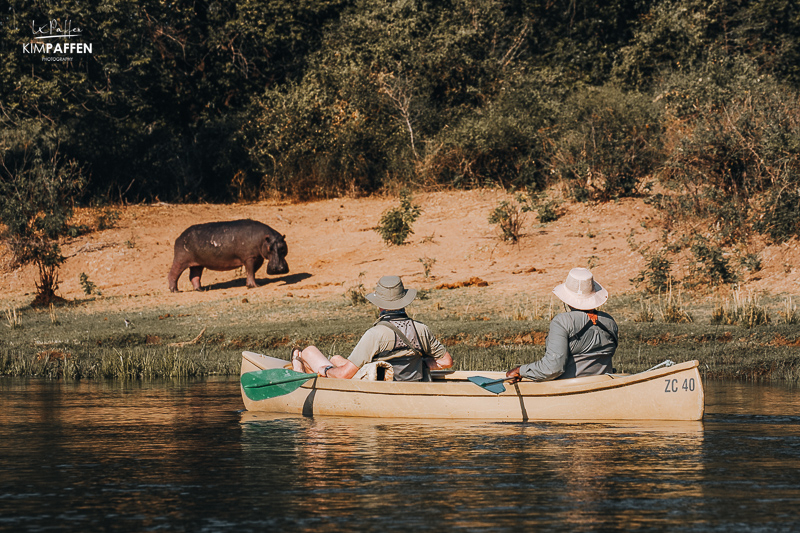
My favorite venues there are the family-owned Chiawa and sister lodge Old Mondoro; the kayaking in the shallow side channels was another highlight in this park. If you would like to read more about som of the best safari lodges in Zambia, check out my article about the 11 best places to stay for safari in Zambia.
3. South Luangwa National Park, Zambia
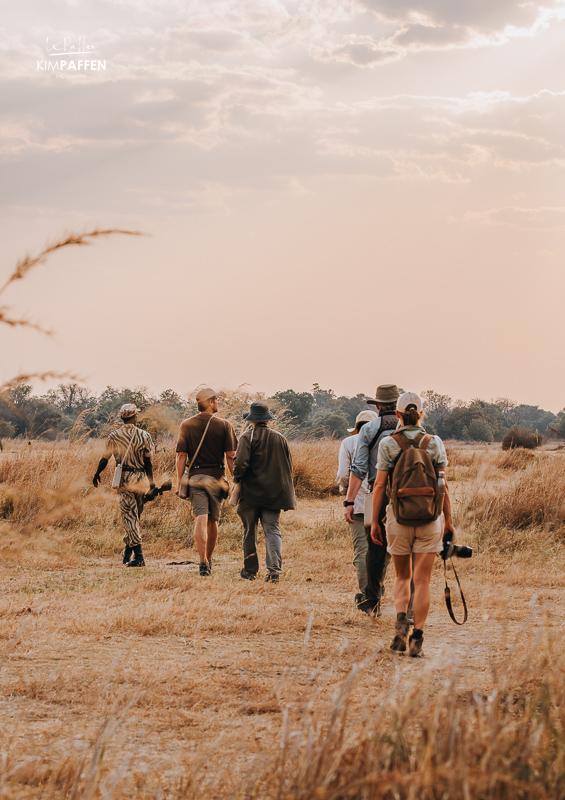
Widely seen as the birthplace of walking safaris, Luangwa offers seasonal bush camps, fly-camps, and foot-only trails. The national parks of the Luangwa valley are proud of their long tradition of guiding walks, and I could see why.
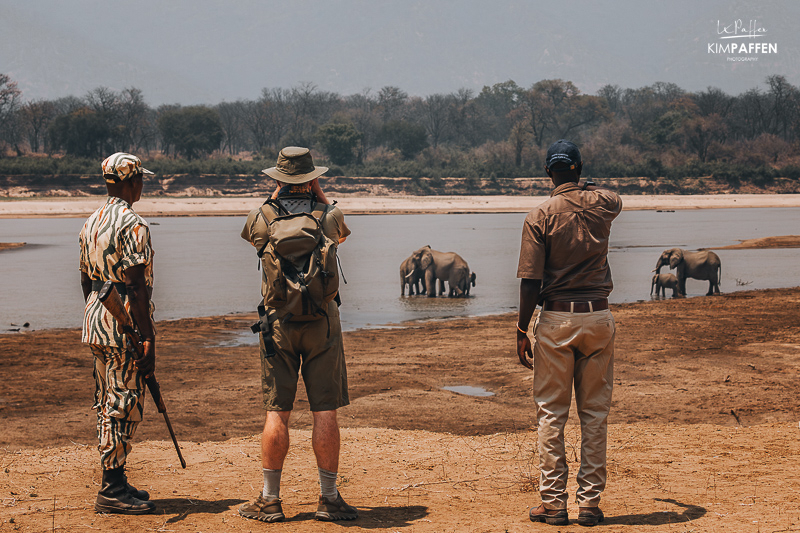
The Luangwa River is completely natural, with no dams, so it floods the valley every year, and this means most of the camps are seasonal and small. They are made from local bush materials, which feels very natural and low-impact; in the image below, you can see how open my room is. I’m happy that at night there’s a bamboo lattice to keep out any roaming cats!
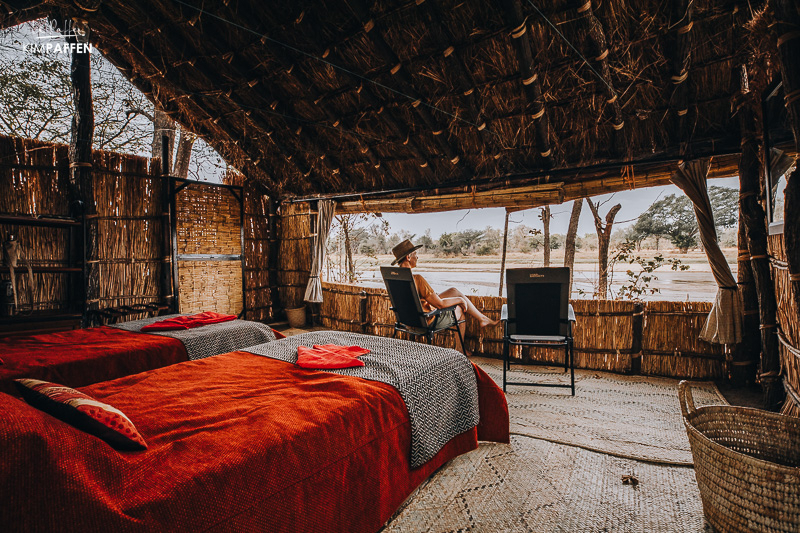
I think every camp and lodge in Luangwa offers walks, and most visitors do at least one. While traveling for the new book Walking Safaris of Africa, we walked with several safari companies and each was different: camp to camp with The Bushcamp Company; camp to camp via a fly-camp with Robin Pope Safaris’ Luangwa Bush Camp, and the foot-only camps of Tafika Trails with Remote Africa Safaris.
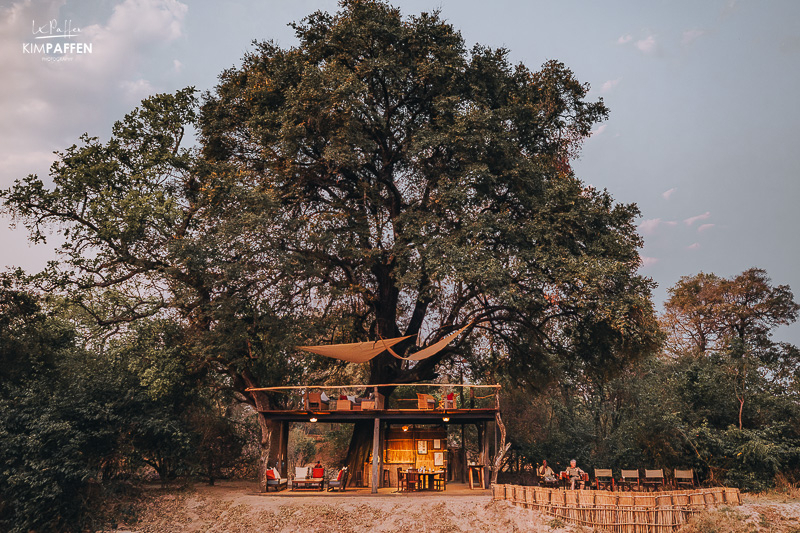
We also flew with the RAS aircraft to North Luangwa National Park, which was really special – the most remote feeling of anywhere I’ve walked.
4. Liwonde National Park, Malawi
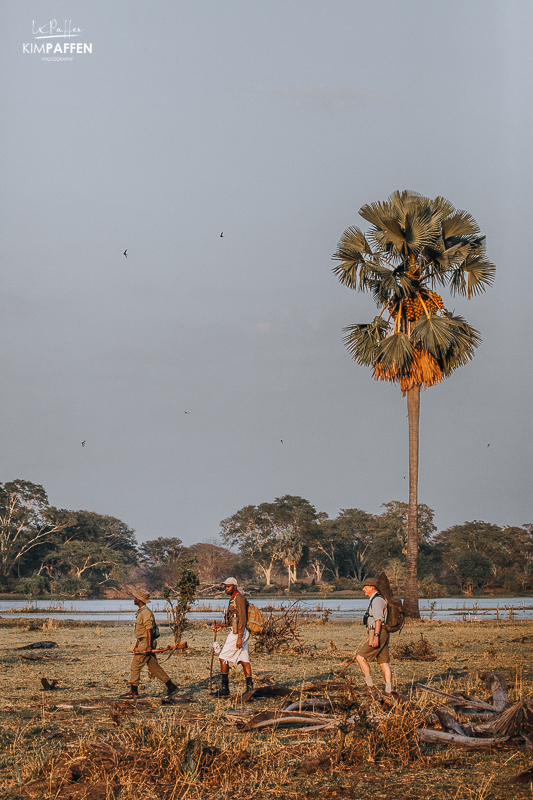
Malawi is less visited, but walking here feels intimate and wild. Traveling in Malawi was a pleasure, and it’s now one of my favorite countries in Africa. There are not as many real safari venues as other places, but also fewer visitors.
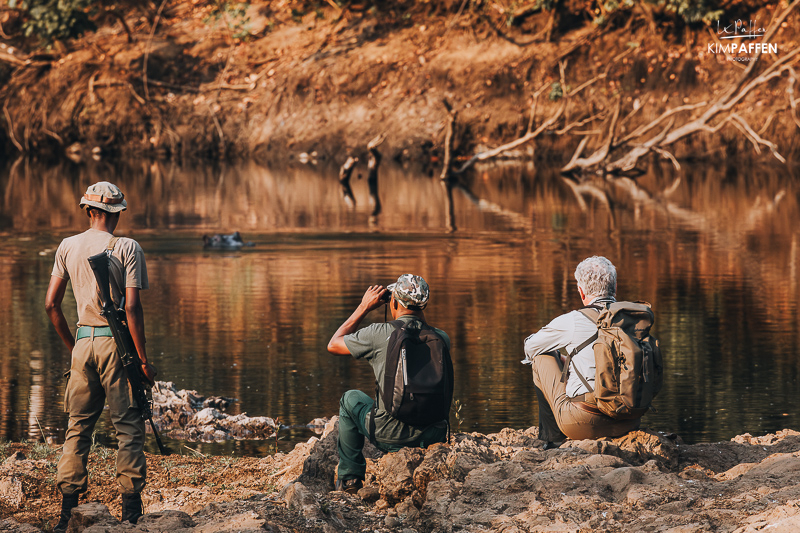
We did short and enjoyable walks from Tongole Wilderness Retreat in Nkhotakota Game Reserve, and then the Shire River Trail in Liwonde with Central African Wilderness Safaris.The walking in Liwonde is easy because of the flat terrain, and is enhanced by the tree cover, and I was pleased with my photos of fever trees and lala palms.

We walked from Mvuu Lodge to where a private fly-camp was set up just for us by the river, and nearby we spotted lions, porcupine, and my first Meller’s mongoose.
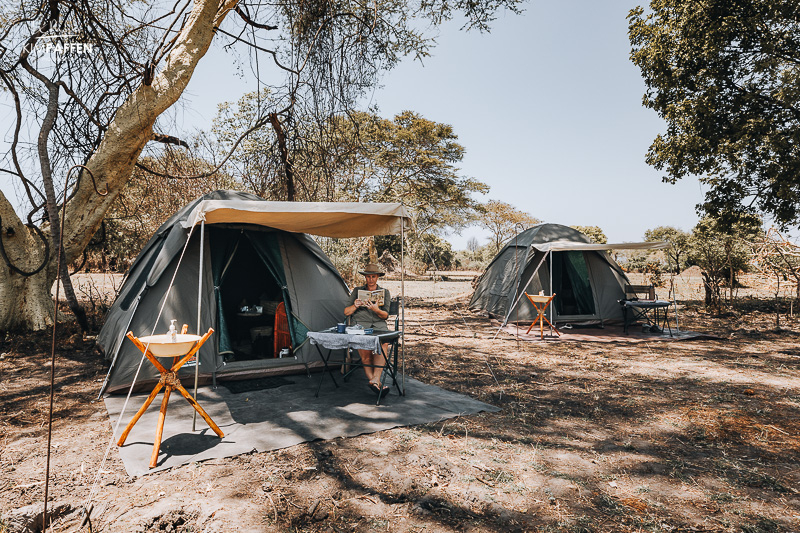
The ability to blend walking with game drives and sundowner river safaris puts Liwonde in my top five, as there are not many places in Africa to do this.
5. Tarangire National Park, Tanzania
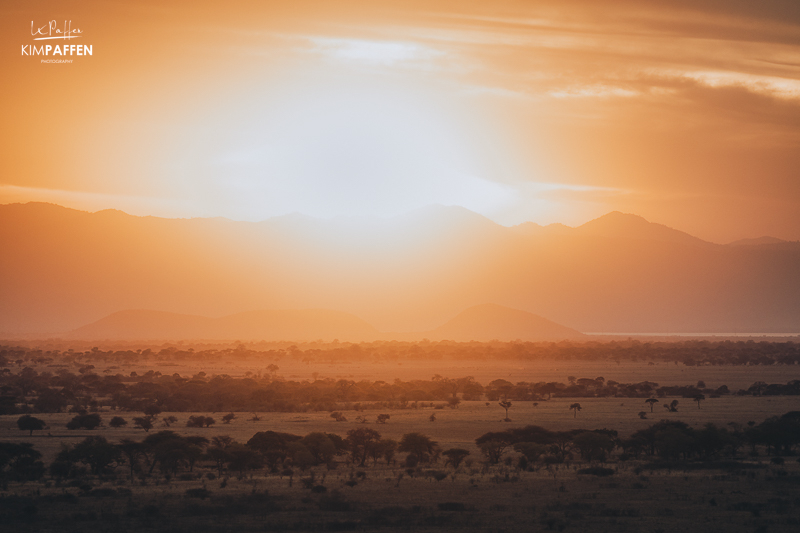
Known for elephants and giant baobabs, Tarangire’s varied landscapes are perfect for walking. So far, my walking in Tanzania is limited, but I can see why it is becoming a more popular activity. In the Serengeti, getting to walk in the remote wilderness-zoned areas is the way to escape busy sightings on vehicle safaris.

I really enjoyed Tarangire National Park for its attractive, varied landscape and density of wildlife (lots of elephants!).

In the nearby Wildlife Management Area, Tarangire Treetops camp by Elewana leads walks: to be honest, my favorite part of the walk was at the end when we were served an incredible bush breakfast under a baobab tree. Pure safari magic.
FAQs: Walking Safaris of Africa (Book) & Planning a Walking Safari
What is the Walking Safaris of Africa book about?

Walking Safaris of Africa by Denis Costello is a 350-page guide to exploring Africa on foot, featuring nine countries, practical planning advice (when to go, what to pack, what to expect), and inspiring photography including 50+ of my images from Zambia, Zimbabwe, Malawi, South Africa, Namibia, Kenya & Tanzania.
Who is the author of Walking Safaris of Africa?
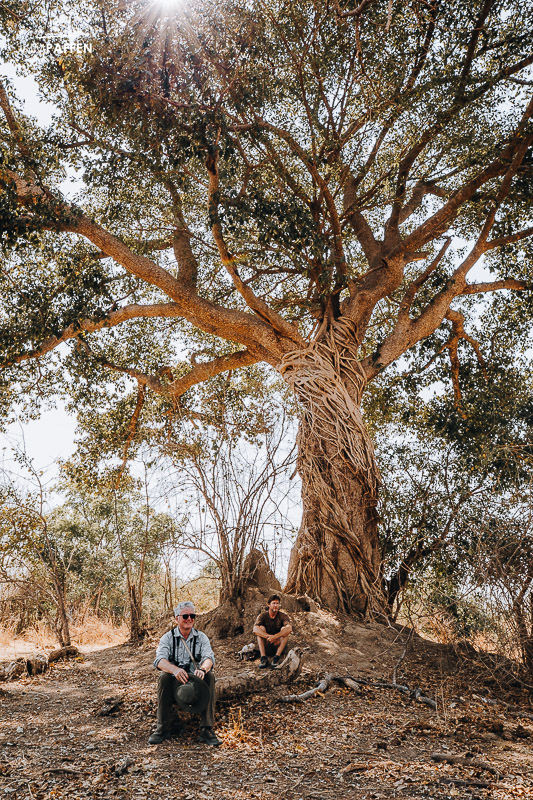
The book is written by Denis Costello, a travel writer and editor with deep experience in African safari destinations and guided walking experiences.
What makes walking safaris different from game drives?
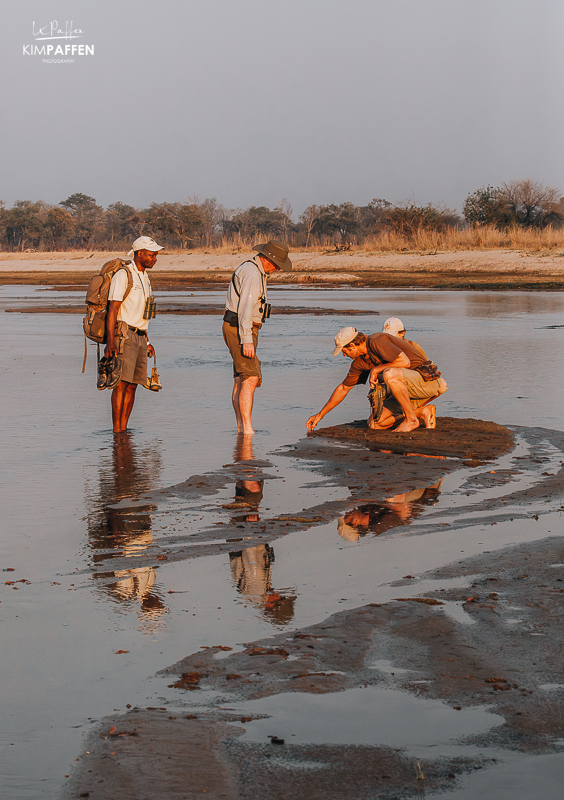
Walking safaris slow the pace and heighten your senses (hearing bees in fever trees, smelling wild sage, reading tracks and signs with an expert Trails Guide) so you connect more deeply with the ecosystem than you typically do from a vehicle.
What are the top walking safari destinations in the book?
Highlights include Kruger (Pafuri Triangle), Lower Zambezi, South Luangwa, Liwonde, and Tarangire; all known for excellent guides, varied habitats, and small camps ideal for walkers.
Are walking safaris safe?
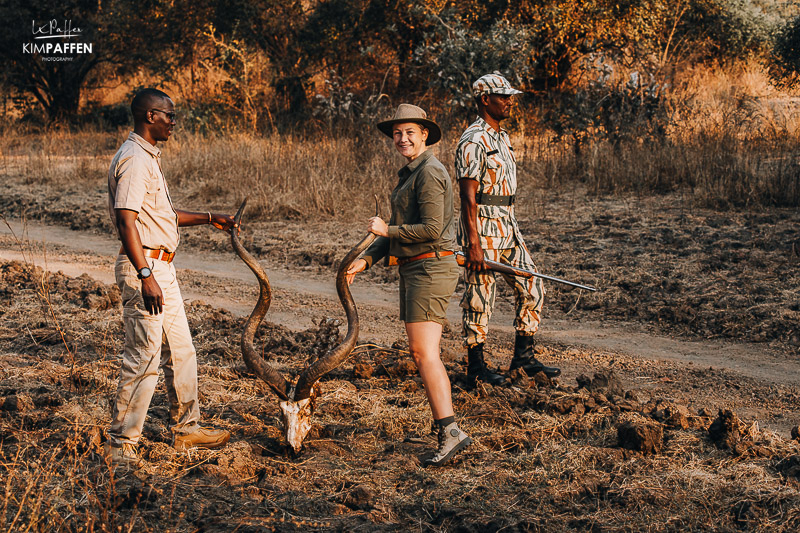
Yes, when conducted by qualified Trails Guides who manage distance, wind, cover, and animal behavior. You’ll be briefed on safety, spacing, and walk etiquette before heading out.
Where can I buy Walking Safaris of Africa?
It’s available on Amazon (USA/UK), Bol.com (NL), and selected bookshops in the UK and South Africa. Search for the title + author to find your preferred retailer.
Buy Walking Safaris of Africa on bol.com or Amazon. Or check all other places to get this book with guided walks from the Cape to Kenya.
Final Thoughts
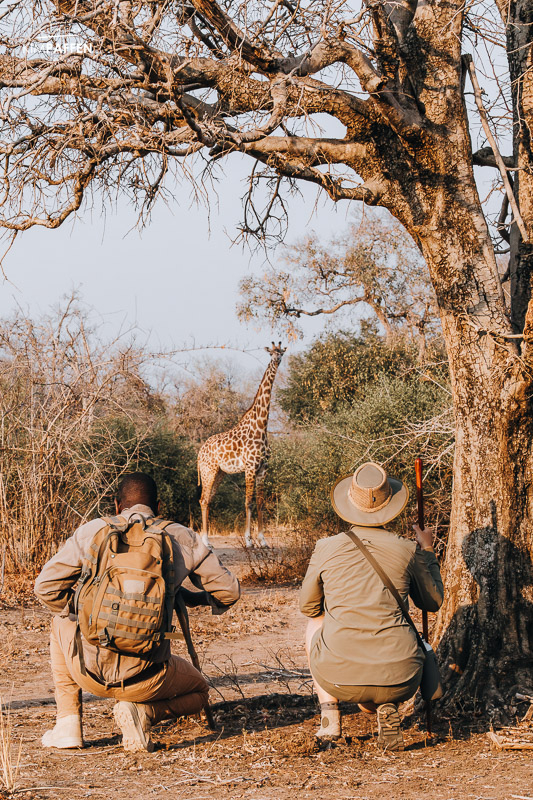
For me, Walking Safaris of Africa is more than a book, it’s an invitation. An invitation to slow down, leave the vehicle behind, and step into Africa’s wilderness on foot.
Walking Safaris of Africa is an excellent resource for people who have yet to try walks, as it has all the expected info on when and where to go, what to pack, what to wear, and what to expect on trail. I think it will also appeal to more experienced walkers, who will definitely find new destinations to add to their wish list, as I did.
This beautifully produced guide - with good quality paper and color reproduction - will inspire you to experience Africa differently. And perhaps, like me, you’ll discover that the best safari memories are made not from the seat of a Land Cruiser, but from the steady rhythm of your own footsteps on a wild trail.

